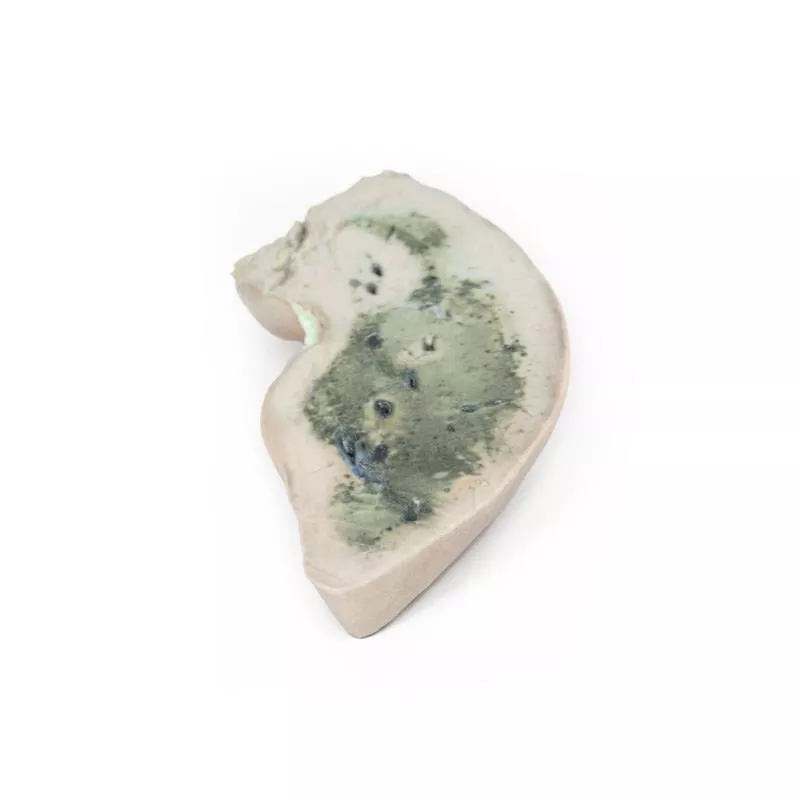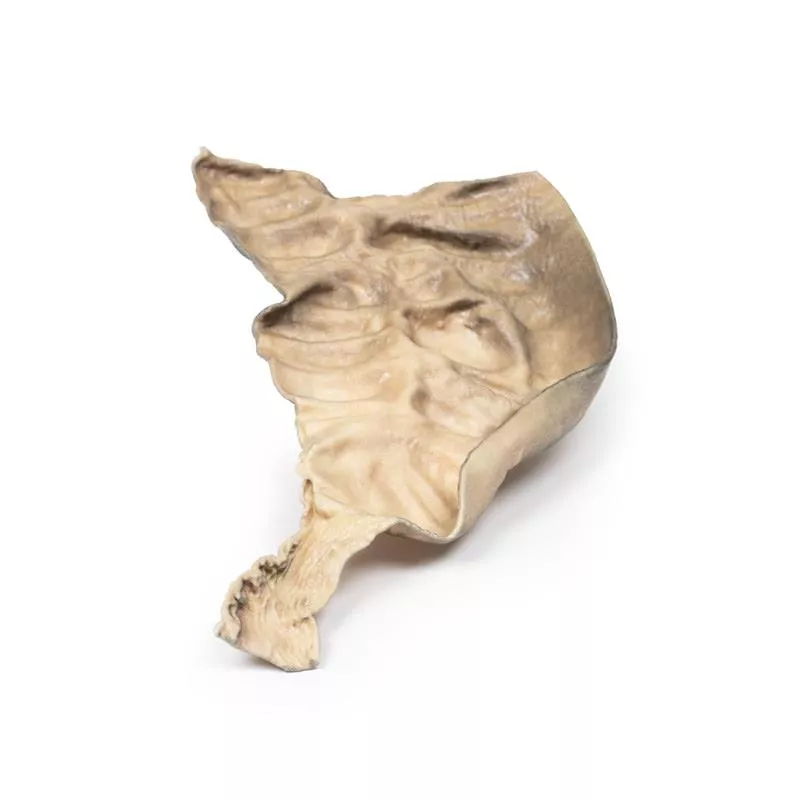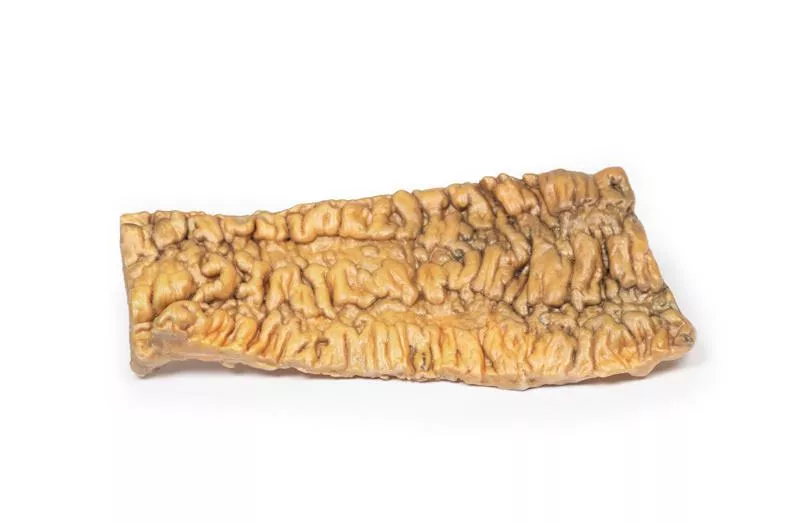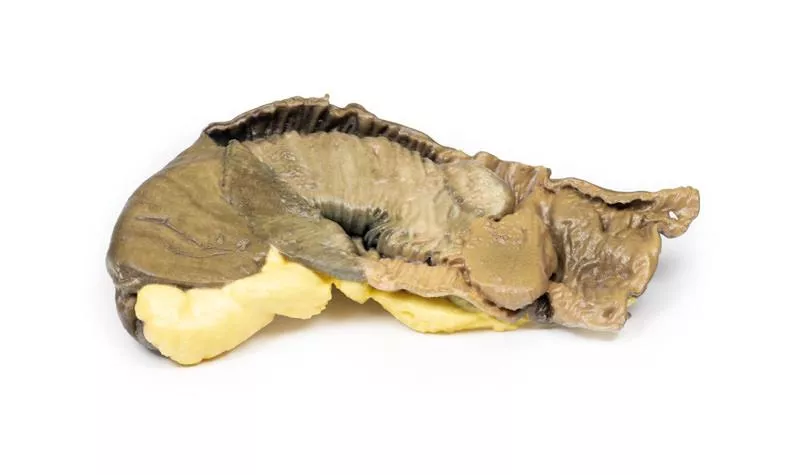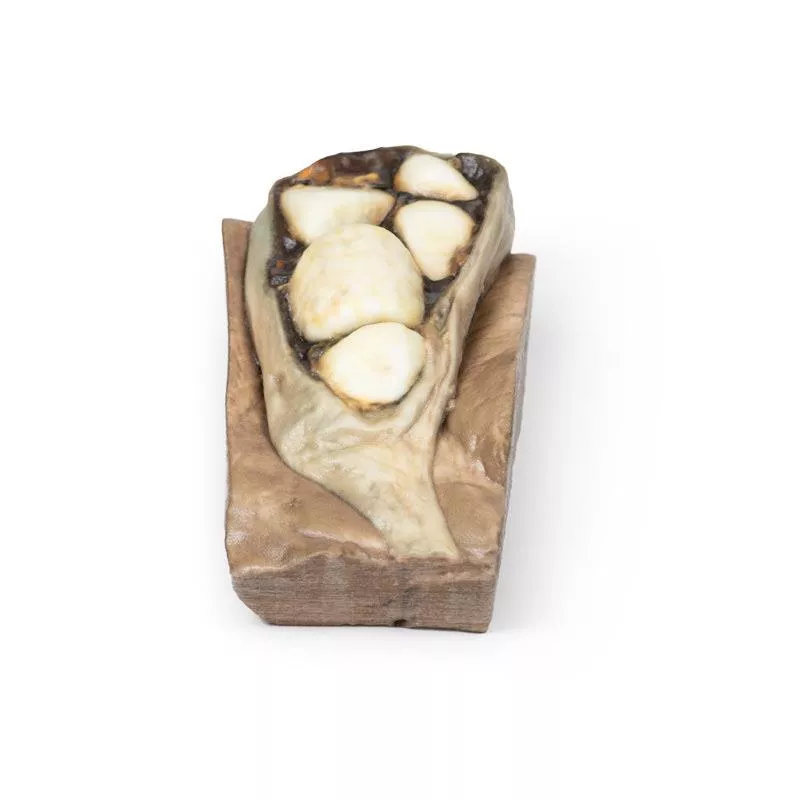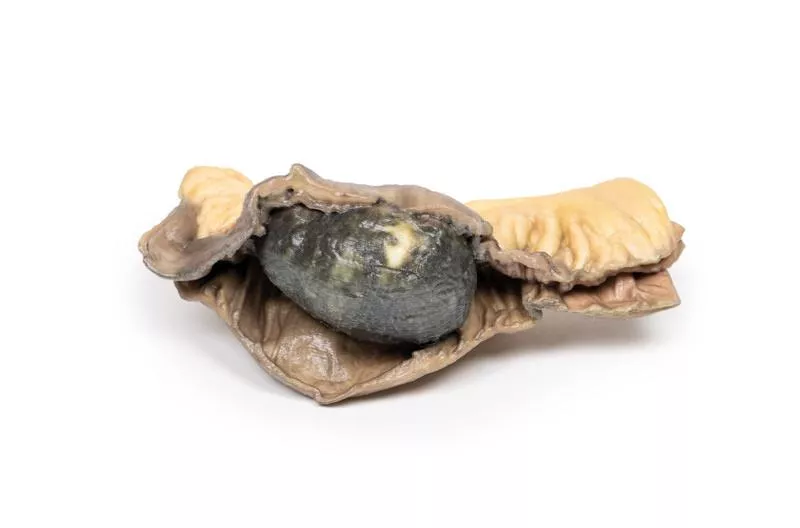Product information "Fatty Liver"
Clinical History
No clinical details are available.
Pathology
A liver slice shows a characteristic yellow/grey, greasy appearance on one side. The opposite side has this change limited to the outer margin, while the central area appears darker, likely due to cirrhosis. This is an example of fatty change in the liver.
Further Information
Fatty change (steatosis) involves triglyceride accumulation in the liver and can be caused by obesity, diabetes, alcohol abuse, starvation, Kwashiorkor, drugs, and toxins. Alcoholism is the most common cause in many populations.
No clinical details are available.
Pathology
A liver slice shows a characteristic yellow/grey, greasy appearance on one side. The opposite side has this change limited to the outer margin, while the central area appears darker, likely due to cirrhosis. This is an example of fatty change in the liver.
Further Information
Fatty change (steatosis) involves triglyceride accumulation in the liver and can be caused by obesity, diabetes, alcohol abuse, starvation, Kwashiorkor, drugs, and toxins. Alcoholism is the most common cause in many populations.
Erler-Zimmer
Erler-Zimmer GmbH & Co.KG
Hauptstrasse 27
77886 Lauf
Germany
info@erler-zimmer.de
Achtung! Medizinisches Ausbildungsmaterial, kein Spielzeug. Nicht geeignet für Personen unter 14 Jahren.
Attention! Medical training material, not a toy. Not suitable for persons under 14 years of age.



















